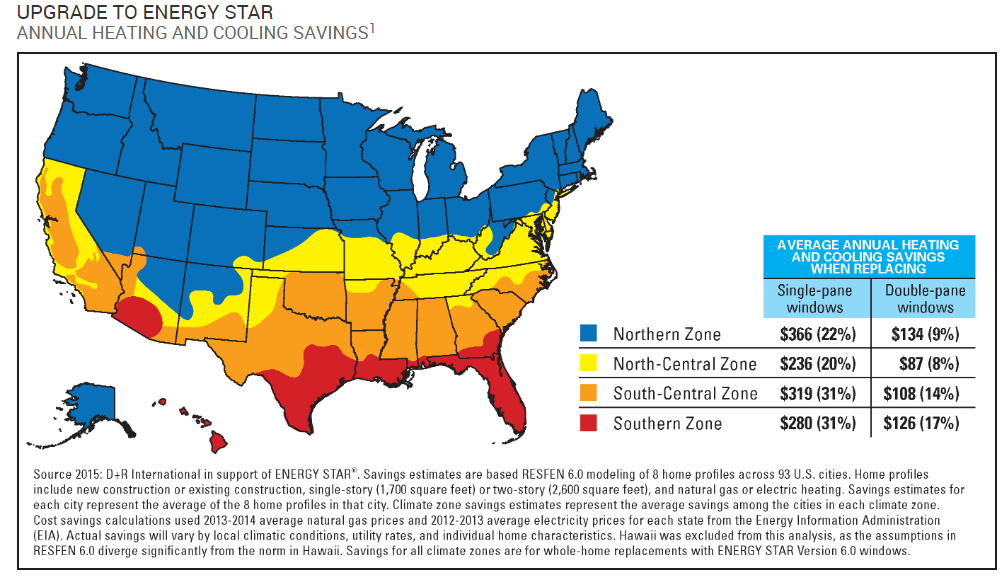One crucial window-performance rating helps you stay comfy and conserve cash.
Winter is on its way, and with the rising cost of living, we all wonder: how can I lower my utility bills? Yes, you can turn down your heat and layer on an extra sweater, but you also want to be comfortable in your own home. Winters do get cold where I’m at in Baltimore, so let’s look closer at how efficient windows can help in a cold climate.
If you have spent any time looking at the benefits of efficient windows (highly recommended!), you know that having them helps keep heat inside your home during cold months. Replacing your windows, of course, is not something that one decides to do on a whim. But if you think it might be time to buy new windows and you live in a cold climate, it’s time to understand the labels you see on windows. Pay close attention to the U-factor rating.
The U-factor of a window determines how much heat will escape from your home through that window. I’ve learned, working with the Efficient Windows Collaborative and our parent organization, the National Fenestration Rating Council (NFRC), that U-factors range from a rating of .2 to 1.2. A lower number is better.
If you’re like me and live in a cold or mixed-climate zone, having windows with a lower u-factor can cut your winter heating bill while keeping you more comfortable. According to the U.S. Environmental Protection Agency, people in the Northern climate zone who replace old double-pane windows with Energy Star-certified versions save an average of 9% on their average annual heating and cooling costs. If they replace single-pane windows, that savings goes up to 22%.
Like all ratings, where you are located will determine what U-factor you should look for if you are buying new windows. Use the map on the right to figure out your zone. At a minimum, you should make sure that your windows are ENERGY STAR® certified. Windows don’t qualify for ENERGY STAR certification unless the u-factor is at or lower than:
Northern climate zone – .27
North Central – .3
South Central- .3
Southern – .4

Now, it’s true that windows are not a quick fix for your heating bills – they’re something you replace once every 15 years or so, not when the weather turns cold. But, if replacing your windows is on your home improvement to-do list, choosing efficient windows has the potential to lower your heating bills and keep you more comfortable during the cold months. To help you get started, check out the Choosing Windows page on our site, and use the Window Selection Tool to find windows that meet your criteria.
 Matt is a communications consultant based in Baltimore, Maryland, who works with the efficiency experts who run the Efficient Windows Collaborative to help spread an important message about efficient windows.
Matt is a communications consultant based in Baltimore, Maryland, who works with the efficiency experts who run the Efficient Windows Collaborative to help spread an important message about efficient windows.
